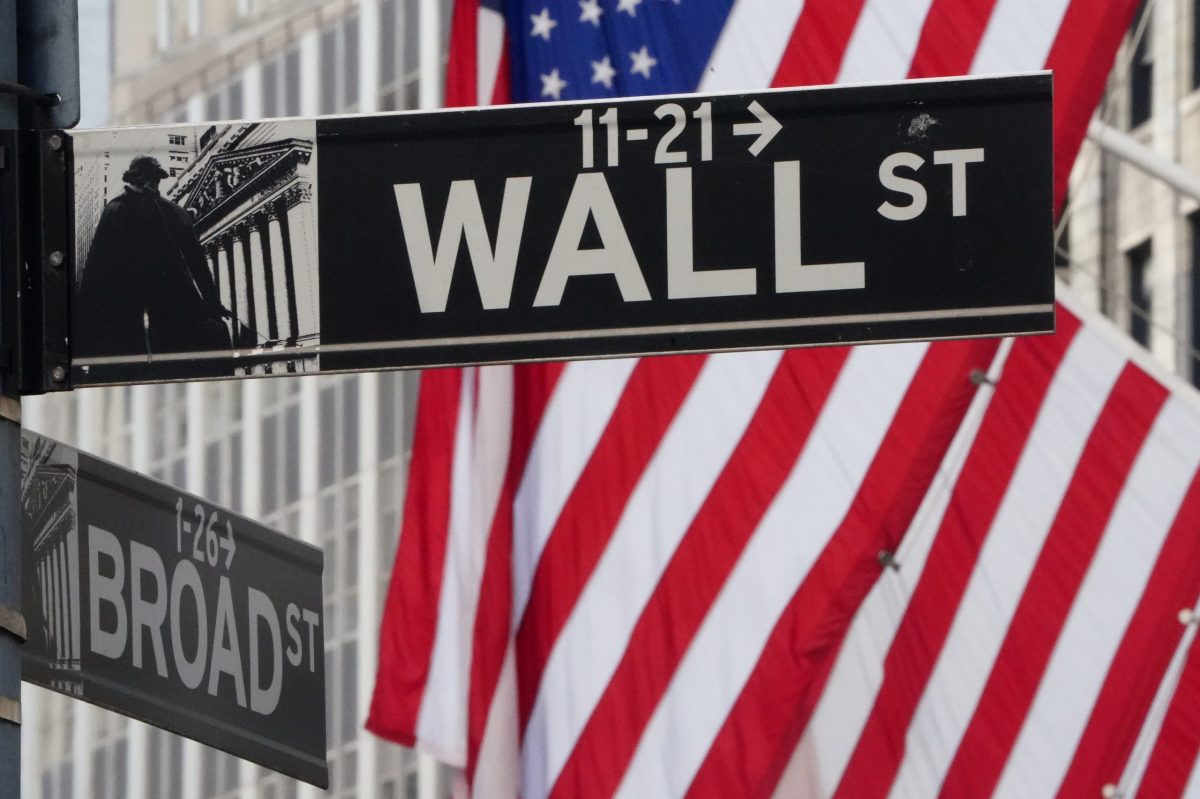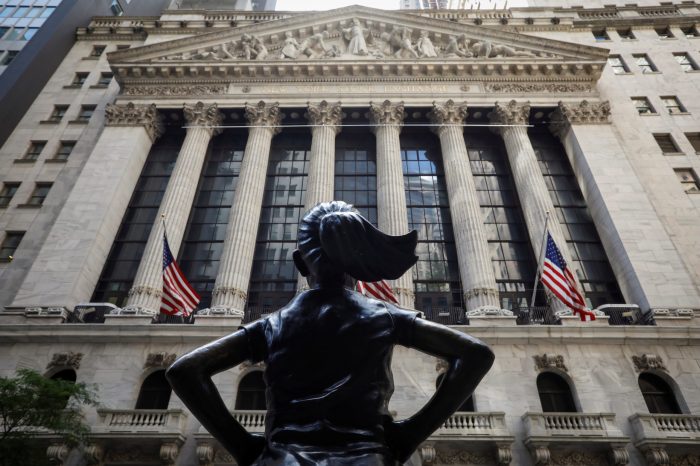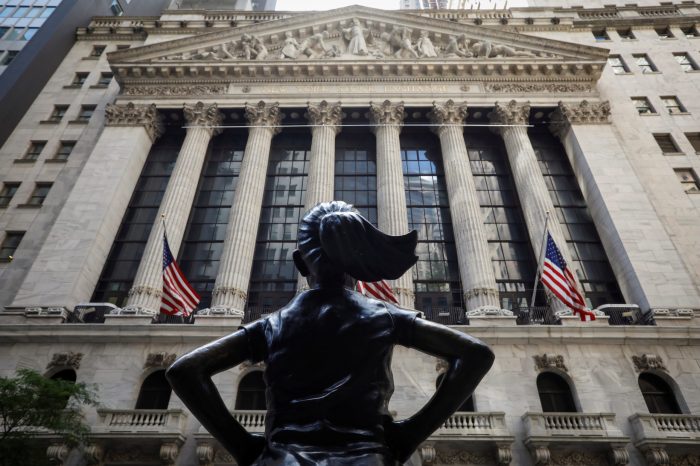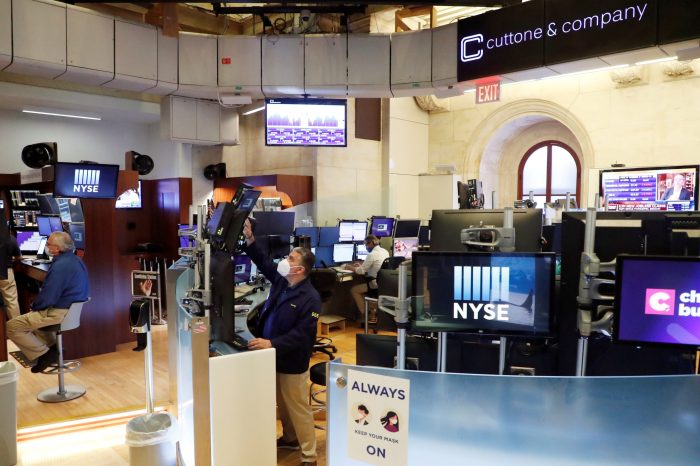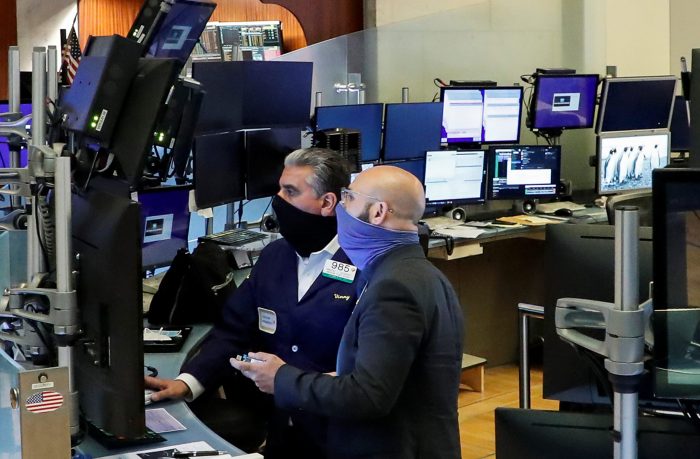By Devik Jain and Ambar Warrick, Reuters
The S&P 500 and the Dow rose on Wednesday as jobless claims unexpectedly fell last week, while the Nasdaq retreated from a record high close on losses in heavyweight technology stocks.
The markets also appeared to have shrugged off a threat from President Donald Trump to not sign an $892 billion coronavirus relief bill, saying it should be amended to increase the amount in the stimulus checks.
While the Labor Department’s data showed initial claims for state unemployment benefits fell last week, they remained at elevated levels due to restrictions to curb the spread of new COVID-19 infections.
Meanwhile, a separate report showed consumer spending fell last month for the first time since April, due to weakness in the job market.
“There’s this conflict between the immediate term, where economic conditions are likely to get worse, but longer term, things should improve quite a bit. The stimulus also helps bridge that gap,” said Chuck Lieberman, chief investment officer of Advisor Capital Management in New Jersey.
At 9:41 a.m. ET, the Dow Jones Industrial Average was up 193.58 points, or 0.64%, at 30,209.09, the S&P 500 was up 16.83 points, or 0.46%, at 3,704.09. The Nasdaq Composite was down 7.66 points, or 0.06%, at 12,800.26.
Nine of the 11 major S&P sectors were higher, with energy stocks rising the most.
Microsoft, Paypal and Amazon.com were among the biggest drags on the Nasdaq.
Concerns over a new variant of the coronavirus and weakening economic data have weighed on Wall Street in recent sessions. But technology stocks have consistently outperformed their peers, thanks to the sector’s perceived resilience to virus-related disruptions.
Easy monetary policy, increased liquidity in the market and positive COVID-19 vaccine data has set the main indexes for strong annual gains, despite a rough start to the year.
Drugmaker Pfizer Inc rose 1.7% after a deal to supply the United States with 100 million additional doses of its COVID-19 vaccine by July.
Merck & Co Inc added 0.8% following its own COVID-19 treatment agreement with the United States.
Supernus Pharmaceuticals Inc jumped 15.8% after its experimental drug for attention deficit hyperactivity disorder met the main goal of a late-stage study in adults.
Electric-truck maker Nikola Corp fell 10.1% after it called off a deal to develop electric garbage trucks with recycling and waste disposal firm Republic Services Inc.
American Airlines Group and United Airlines Holdings rose 2.2% and 3.2%, respectively, as they outlined plans to bring back furloughed employees this month. The airline industry is set to receive about $15 billion in government support.
Advancing issues outnumbered decliners by a 3.83-to-1 ratio on the NYSE, and by a 2.19-to-1 ratio on the Nasdaq.
The S&P index recorded 27 new 52-week highs and no new low, while the Nasdaq recorded 177 new highs and no new low.



